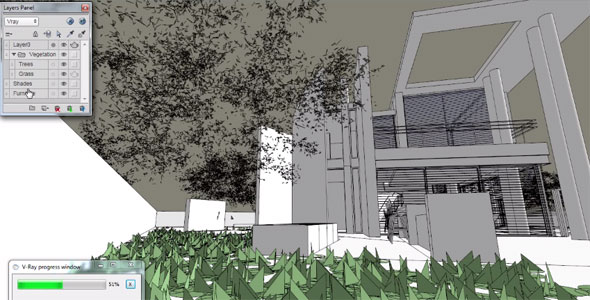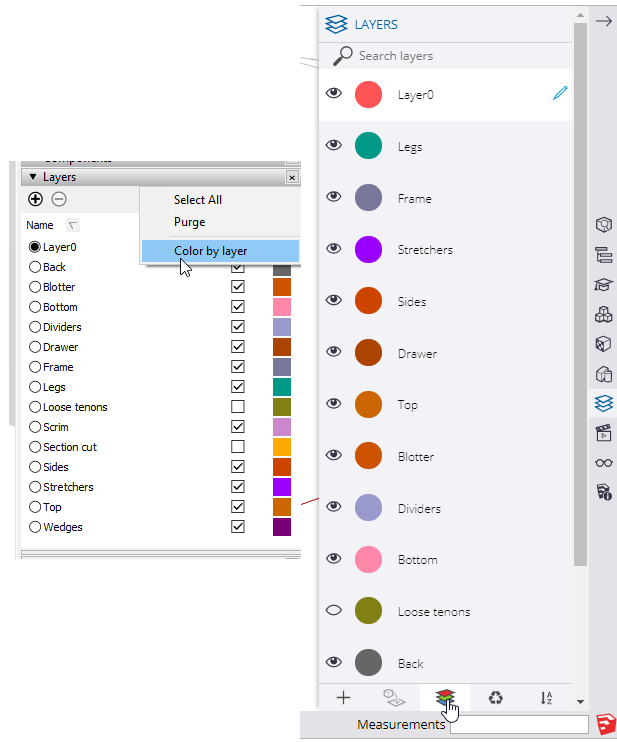

If you plan to use layers, read the section “ Discovering the Ins and Outs of Layers ,” later in this chapter. In SketchUp, using layers the wrong way can seriously mess up your model. In SketchUp, layers are similar - but the ways in which SketchUp layers work differently are important for modelers to know.
SKETCHUP LAYERS PANEL SOFTWARE


After you organize geometry into sets, you can name them, hide them, and even lock them so that you (or somebody else) can’t mess them up. When sorting out the thousands of edges and faces in your model, it’s all about lumping things together into useful sets. This chapter ends with a detailed example of how you can use both tools together to make modeling easier.
SKETCHUP LAYERS PANEL HOW TO
After we introduce each tool, we explain how to use it and how not to use it (are you listening, layers?). This chapter presents SketchUp’s two main tools for organizing your model: the Outliner and layers. Luckily, SketchUp includes a bunch of different ways to keep your geometry - edges and faces - from getting out of control. They can slow your computer, or even cause SketchUp to crash. It’s inevitable.īig, unwieldy, disorganized models are a pain. As you crank away at whatever it is you’re modeling, you’ll reach a time when you stop, orbit around, and wonder how your model got to be such a pigsty. Living life can be a messy ordeal, and modeling in SketchUp is no exception. Taking stock of your model with the OutlinerĪvoiding problems by using layers the right way To change the layer color, click on the color swatch next to the layer name.SketchUp For Dummies (2017) Part 2 Modeling in SketchUp Chapter 7 Keeping Your Model Organized It is a good idea to give your layers descriptive names that reflect the purpose of the layer (e.g. To rename the layer, double-click on the layer name and enter a new name. “Layer2”) and a default color (usually red). This will create a new layer with a default name (e.g. To create a new layer, go to the Layers panel (usually located on the right side of the screen) and click the “Create New Layer” button. In this tutorial, we will walk you through the process of using layers in SketchUp. Català – Castellano – Deutsch Layers are a powerful tool in SketchUp that allow you to separate different parts of your model, making it easier to work on specific components and control the appearance of your model. Do you use Layers in SketchUp? Maybe this will help you do it better.


 0 kommentar(er)
0 kommentar(er)
